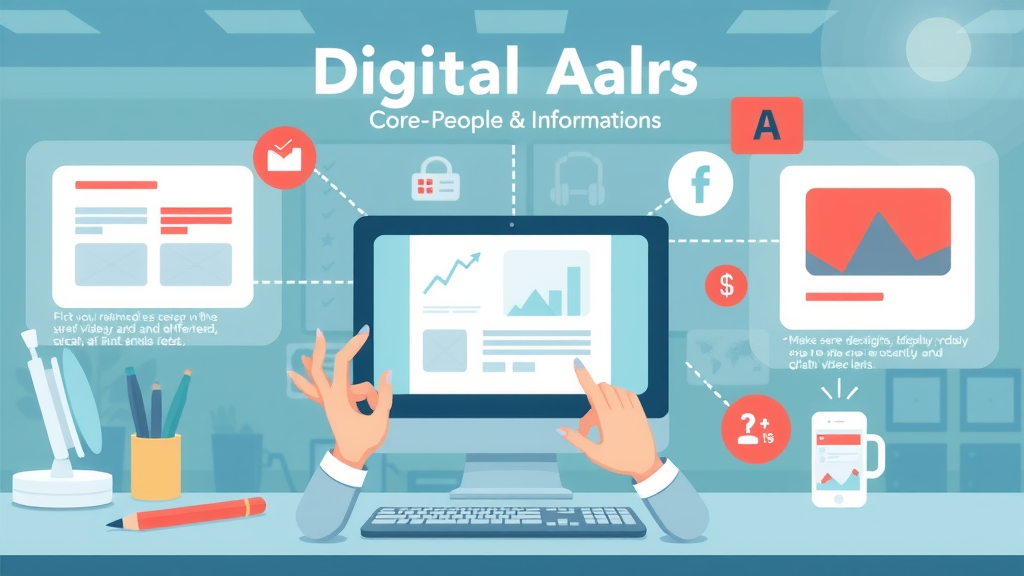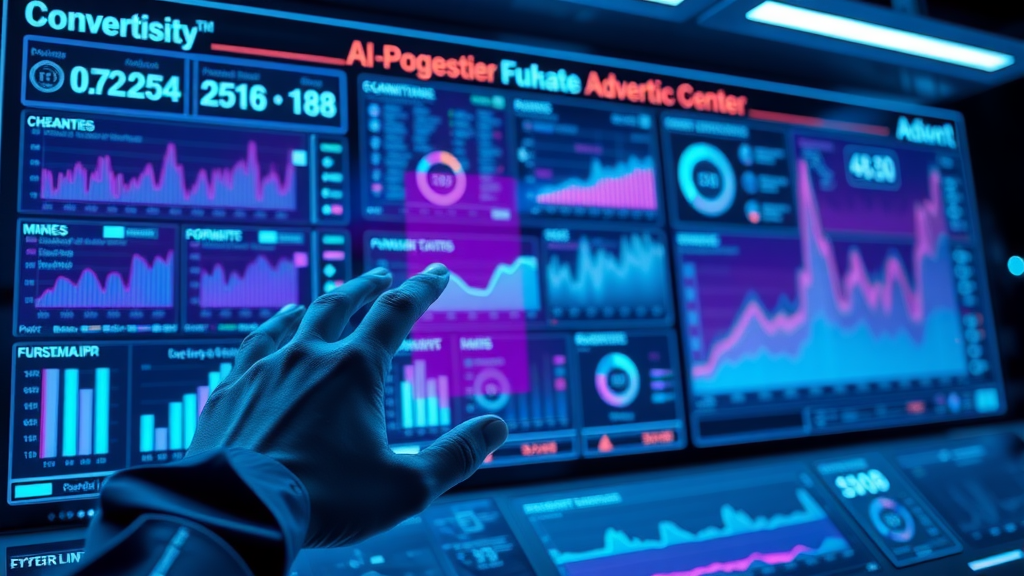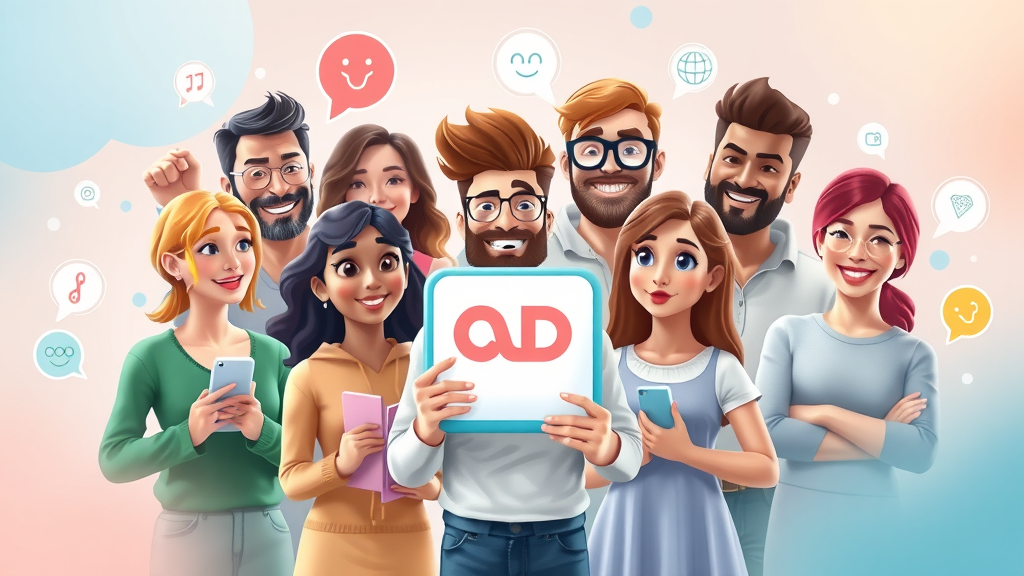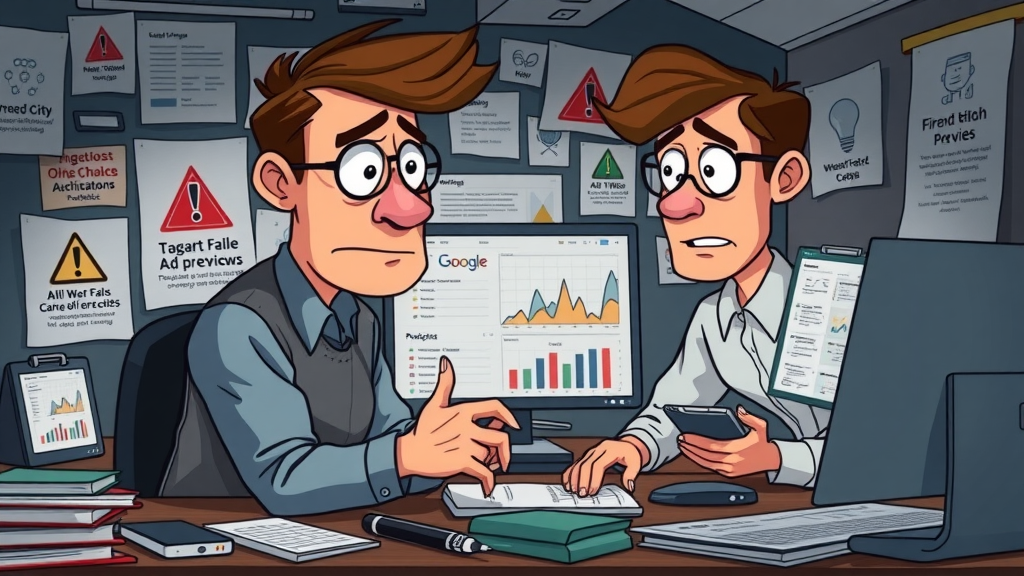Did you know that, according to Google’s Economic Impact Report, “Businesses make an average of $2 in revenue for every $1 they spend on Google Ads”? This powerful statistic reveals the remarkable potential of well-crafted paid advertising strategies. In today’s fast-evolving digital marketing landscape, simply investing in paid ads isn’t enough—it’s strategic planning, precise targeting, and constant optimization that separate high-performing campaigns from wasted budgets. In this comprehensive educational guide, you’ll discover actionable steps, expert tips, and real-world case studies designed to help you maximize your return on investment (ROI) with paid advertising strategies. Whether you’re new to paid ads or seeking to sharpen an existing marketing strategy, this article will equip you to make smarter decisions, drive conversions, and outsmart your competitors—read on to transform your approach to paid advertising!
A Surprising Truth: Why Paid Advertising Strategies Matter Now More Than Ever
Digital marketing is more competitive and complex than ever before. As brands battle for attention across social media platforms, search engines, and media ad spaces, deploying paid advertising strategies is no longer a luxury—it's a necessity to stand out and scale fast. The integration of AI and analytics has raised the bar even higher, making it possible for advertisers to pinpoint the ideal customer, optimize creative assets, and track performance in real time.
With the surge of new platforms and shifting consumer behaviors, investing in a well-defined paid ad strategy empowers businesses to reach engaged audiences exactly where and when they’re most likely to convert. As a result, companies that set clear marketing strategy objectives and leverage advanced targeting are not just surviving, but thriving—turning every advertising campaign dollar into measurable returns. Whether your goal is boosting brand awareness, driving leads, or accelerating sales, the right approach matters now more than ever.
“Businesses make an average of $2 in revenue for every $1 they spend on Google Ads.” – Google Economic Impact Report
What You'll Learn in This Guide to Paid Advertising Strategies
- Understand essential paid advertising strategy elements
- Explore various paid ad types and channels
- Learn tips to optimize paid ads for maximum ROI
- Discover case studies and expert tips
- Review actionable steps for your next advertising campaign

Understanding Paid Advertising Strategies: Key Concepts and Definitions
What is Paid Advertising Strategy?
Definition and Overview of Paid Advertising
Paid advertising is the use of online platforms—like search engines, social media, and display networks—to promote a product or service by paying for visibility. Unlike organic marketing, where you build your audience slowly over time, paid advertising allows for instant exposure by placing your ad in front of users based on specific targeting parameters. This can include search ads that appear atop search engine results pages, display ads showcased across news and content sites, social media ad campaigns tailored to demographic data, and video ads that engage viewers on platforms such as YouTube or TikTok.
A paid advertising strategy is a planned approach for maximizing the performance of your advertising budget. It involves setting campaign objectives, identifying the target audience, selecting the best advertising platform, creating compelling ad creative, and continually optimizing based on data. With the explosion of digital marketing avenues, understanding and executing the right strategy gives your brand an edge in crowded media environments, allowing for precise tracking of metrics such as click-through rate (CTR), cost-per-acquisition (CPA), conversion rate, and return on ad spend (ROAS).
Core Elements in Paid Advertising Campaigns
Every effective paid ad campaign rests on several core elements: well-defined objectives, targeted audience segmentation, creative ad assets, a high-converting landing page, and robust conversion tracking. The type of paid advertising—such as paid search, display ads, social media, or video advertising—determines how your ads are delivered and who sees them. Leveraging features unique to each advertising platform, like keyword targeting in Google Ads or demographic filters on Facebook, is key to ensuring ads resonate with your audience.
Additionally, optimizing ad copy, choosing the right bidding strategy, and setting up measurable key performance indicators (KPIs) are all crucial for gauging and improving campaign success. Employing analytics tools to monitor and adjust in real time can help reduce wasted spend and boost conversion rates, turning paid advertising into one of the most powerful levers in any digital marketing toolkit.

Paid Ad vs. Paid Marketing: Knowing the Difference
While the terms "paid ad" and "paid marketing" are often used interchangeably, there’s an important difference. A paid ad is a single, targeted advertisement—a search ad on Google, a sponsored post on Facebook, or a promoted video on YouTube. Paid marketing, on the other hand, is the broader process and strategy of using paid media—including multiple ad formats and platforms—to achieve your overall business goals.
For example, effective paid marketing goes beyond placing a product or service in front of potential customers; it includes campaign strategy, audience research, creative design, testing, performance analysis, and ongoing optimization. Understanding this hierarchy helps marketers align their tactics to achieve both short- and long-term objectives, whether that’s increasing brand awareness, capturing leads, or closing sales through multi-channel advertising campaigns.
Why Invest in Paid Advertising Strategies?
Benefits of Paid Advertising for Business Growth
Investing in paid advertising strategies offers immediate advantages: instant visibility, highly targeted reach, scalable results, and transparent performance tracking. Whether launching a new product or scaling an established brand, paid ads can rapidly accelerate outcomes that would take months to achieve through organic channels alone. They’re especially effective for driving website traffic, building a customer base, and improving brand recall through repeated exposure on search engines and social media ad platforms.
Modern advertising platforms provide deep analytics and reporting, allowing constant refinement of campaigns for higher ROI. By focusing spend on top-performing media ad channels and audiences, businesses can amplify their message, discover ideal customers faster, and turn marketing spends into revenue leaps.
When to Use Paid Ad Campaigns for Fast Results
Paid advertising shines when you need accelerated outcomes—think launching a flash sale, promoting a time-sensitive event, or quickly building brand awareness in a new market. Because paid ads offer rapid scaling, businesses use them to jumpstart product launches, supplement slow organic traffic, or outmaneuver competitors in peak seasons.
These situations demand precise campaign planning: targeting the right audience, crafting compelling creative, and optimizing landing pages to capture conversions quickly. With robust analytics, marketers can monitor results in real time, pivot strategies, and allocate budgets for the highest impact—making paid ad campaigns a go-to tool for fast, measurable results.
ROI Potential: Measuring Success in Paid Marketing
The beauty of digital paid advertising is clear, measurable ROI. By tracking core metrics—click-through rates, cost-per-acquisition, conversion rates, and return on ad spend—organizations can directly link campaign efforts to bottom-line results. Advanced platforms such as Google Ads and Facebook Ads Manager provide granular insights into audience engagement, keyword performance, and creative effectiveness, supporting continuous improvement.
Marketers who monitor and optimize their campaigns can often double—or even quadruple—their ROI over time. This data-driven approach ensures that advertising spend is always aligned with strategic goals, yielding outsized results even in saturated markets.

Major Types of Paid Advertising Strategies
Paid Search: Targeting with Search Ads
How Google Ads Work for Paid Advertising
Paid search advertising allows your brand to appear at the top of search engine results pages (SERPs) when users look for specific keywords. Google Ads is the industry leader, enabling highly targeted campaigns based on keyword selection, user location, device, and more. By leveraging paid search ads, businesses ensure their offerings are visible precisely when potential customers are demonstrating purchase intent—making it one of the highest-ROI types of paid advertising.
Effective Google ad campaigns involve researching high-intent keywords, writing compelling copy, optimizing landing pages, and using negative keywords to reduce wasted spend. The platform’s flexible bidding strategies (e.g., CPC, CPA, ROAS) allow for fine-tuned budget control and scaling as you see positive ROI.
Bing and Other Search Engine Paid Ads
While Google dominates, Bing Ads and other search engine advertising platforms should not be overlooked—especially for certain demographics or industry niches. Bing’s user base is distinct, often consisting of older or more affluent users, and less competition often means lower cost-per-click. Integrating Bing or Yahoo into your paid search ad strategy can diversify lead sources and boost overall campaign effectiveness.
Success with alternative search engines mirrors the best practices in Google Ads: targeted keywords, relevant ad creative, optimized landing pages, and ongoing analysis of what drives clicks and conversions across each channel.
Social Media Ad Campaigns: Facebook, Instagram, LinkedIn, and Beyond
Best Social Media Platforms for Paid Ad Campaigns
Social media ad platforms like Facebook, Instagram, LinkedIn, and TikTok offer unparalleled targeting and creative options. Facebook Ads provides custom audiences, lookalikes, and deep demographic segmentation. Instagram excels at visually engaging millennial audiences, while LinkedIn ads are ideal for B2B outreach, targeting by role, company, or industry.
Choosing the right platform depends on your ideal customer and campaign objectives. For instance, LinkedIn Ads work well for enterprise products or recruitment, while Instagram and TikTok are prime for brand awareness with younger, visually-oriented demographics.
Examples of Social Media Paid Advertising Success
Many companies have successfully scaled using social media ads. For example, a retail brand might launch a Facebook ad campaign targeting holiday shoppers with carousel ads, seeing a surge in conversion rate and online sales. B2B SaaS firms often leverage LinkedIn ads to secure quality leads by offering gated content to decision-makers. Creative use of video ads and retargeting strategies on Instagram and TikTok can transform brand engagement, driving both awareness and direct purchases.

Display Ads: Visual Impact Across the Web
Display Advertising Best Practices
Display ads are graphics-based ads featured across millions of websites, often via the Google Display Network or programmatic ad platforms. They’re excellent for building brand awareness and retargeting site visitors. Eye-catching imagery, concise messaging, and clear calls-to-action are hallmarks of high-performing display advertising. Regular A/B testing of visuals and copy helps uncover what resonates with your target audience, increasing click-through and conversion rates.
Targeting options—like contextual targeting, placements, or affinity audiences—ensure your ads reach high-potential customers, not random visitors. Ad creative should align with landing page messaging for a seamless user experience and higher conversion rates.
Retargeting with Display Ad Networks
Retargeting display ad campaigns re-engage users who’ve visited your site but haven’t converted. By “following” potential customers with tailored ads across the web, you stay top-of-mind and nudge them toward completing a purchase or inquiry. Dynamic retargeting, which personalizes ads based on user browsing behavior or abandoned carts, is especially effective for e-commerce and lead generation efforts.
The best display ads utilize a mix of impression-based awareness and targeted retargeting, ensuring a full-funnel paid ad strategy to capture and convert every stage of your audience.
Video Ad Strategies for Maximum Engagement
YouTube, TikTok, and Video Paid Advertising
Video ads dominate engagement across digital platforms. YouTube Ads reach billions with in-stream and discovery formats, while TikTok Ads captivate audiences with short-form, highly shareable video content. Both offer advanced targeting based on interests, behaviors, and demographics—making them essential for brands looking to tell stories, demonstrate products, or educate users.
A successful video ad strategy mixes compelling visuals, concise messaging, and a strong call-to-action. Analytics dashboards on these platforms give real-time feedback on views, watch time, and conversion events, so continuous optimization is possible.
Video Ad Formats: In-Stream, Out-Stream, Bumper
Understanding the right format is critical for your video ad success. In-stream ads play before or during other videos (skippable or not), making them ideal for high-impact storytelling. Out-stream ads auto-play within content feeds, offering less intrusive engagement. Six-second bumper ads are perfect for delivering quick, memorable branding messages. Matching video ad formats to your audience’s consumption habits and your marketing goals maximizes both reach and effectiveness.

Emerging Types of Paid Media Ad Strategies
Native Ad Campaigns and Influencer Partnerships
Native ads blend seamlessly with content on news, social, and content platforms, providing valuable information while subtly promoting a product or service. They’re less intrusive than traditional ads and often see higher engagement. Additionally, influencer marketing leverages trusted personalities to deliver your message authentically to their followers, expanding reach beyond your owned channels.
When integrated, native ads and influencer partnerships create a full-funnel approach that moves audiences from awareness to action, building brand legitimacy and driving conversions.
Programmatic and Automated Paid Ads
Programmatic advertising uses AI and real-time bidding to automate ad placements across online inventory, delivering ads to the right users at the right time based on data. This lowers costs, increases efficiency, and ensures campaigns remain nimble—key advantages in competitive spaces. Automation tools can manage bidding, optimize creative, and adjust targeting on the fly, making paid advertising more scalable and adaptive than ever before.

Selecting the Right Paid Advertising Platform
Choosing Between Google Ad Campaigns, Social Media, and Display Ads
Picking the ideal advertising platform is crucial for campaign effectiveness. Google Ads are perfect for targeting high-intent users on search engines; Facebook and Instagram Ads excel at demographic and interest-based targeting; LinkedIn Ads home in on professionals. Display ad networks focus on visual impact and retargeting across the web.
Consider where your target audience spends time, the campaign objective, budget, and the creative assets you can offer. A table below summarizes the major strengths and limitations of each advertising platform to support your decision-making.
| Advertising Platform | Best For | Audience Targeting | Formats | Strengths |
|---|---|---|---|---|
| Google Ads | Search-based conversions, high purchase intent | Keywords, demographics, locations | Search ads, Display ads, Video ads | Massive reach, high-intent users, measurable ROI |
| Facebook Ads | Brand awareness, ecommerce, social engagement | Demographics, interests, behaviors | Image, Video, Carousel, Stories | Deep targeting, visual impact, remarketing |
| LinkedIn Ads | B2B leads, professional services, hiring | Job titles, industries, companies | Sponsored Content, Message Ads, Display | Precise B2B targeting, professional data |
| Display Networks | Branding, retargeting, visual storytelling | Contextual, behavior, interest segments | Banner ads, Video ads, Rich media | Mass exposure, retargeting, engaging visuals |
How to Match Paid Advertising to Your Target Audience
Audience Segmentation in Paid Ad Campaigns
Audience segmentation divides users into distinct groups—by demographics, behaviors, or interests—so ads show to those most likely to convert. Google Ads, Facebook Ads, and LinkedIn Ads offer granular segmentation tools to target your ideal customer, ensuring that budget isn’t wasted on uninterested viewers.
Understanding your buyer personas, purchase behaviors, and motivations enables creation of tailored messaging that drives action. Advanced segmentation—such as lookalike audiences or layered criteria—further refines targeting, directly fueling campaign conversion rates and lowering acquisition costs.
Personalizing Paid Marketing for Conversions
Personalization in paid marketing goes beyond segmentation. It means dynamically adjusting ad content, creative, and landing pages to match each audience segment’s needs. For example, an ecommerce ad might show different promotions for new versus returning visitors, or adjust copy based on user search intent.
Using advanced personalization—like dynamic keyword insertion in search ads or retargeted product recommendations—boosts engagement and conversion rates. The more relevant your paid ads feel to the recipient, the greater the likelihood of driving measurable results.

Developing Winning Paid Advertising Strategies: The Step-by-Step Process
- Set campaign objectives and KPIs for paid ads
- Identify your target audience
- Select the most effective advertising platforms
- Craft compelling ad creative and copy
- Design high-converting landing pages
- Implement robust conversion tracking and analytics
"Every dollar spent on a well-optimized paid advertising campaign can yield exponential returns." – Digital Ad Strategy Specialist
Optimizing Paid Advertising Strategies for Better ROI
Best Practices for Paid Ad Copy and Creative
Powerful paid advertising strategies rely on persuasive copy and eye-catching visuals. Use clear, benefit-driven headlines, supporting text that speaks directly to the audience’s pain points, and strong calls-to-action. Test several creative variations to discover what resonates best. High-quality visuals—whether for display ads or social campaigns—should be relevant, uncluttered, and branded consistently.
Authenticity and transparency can further boost trust and engagement, while highlighting urgency or social proof drives higher click-through and conversion rates.
A/B Testing Your Paid Ads and Landing Pages
The key to continual improvement is A/B testing various elements: headlines, images, ad copy, calls-to-action, and even landing page design. Start with controlled tests—changing only one variable at a time for accurate measurement. Platforms like Google Ads and Facebook make it easy to set up experiments and review performance data.
By identifying which combinations yield the highest conversion rate, you can allocate more budget to top performers and reduce wasted spend, consistently refining your advertising campaign for optimal results.
Ongoing Performance Analysis Using Advertising Platforms’ Analytics
Leading advertising platforms offer real-time analytics dashboards that let you track every aspect of your campaign—from impression and click data to conversion events and ROI. Set up custom reports and automated alerts to spot trends, underperformers, and opportunities for scaling.
Regularly reviewing and acting upon campaign analytics ensures your paid advertising strategy is always aligned to business objectives, empowering agile adjustments that keep you ahead in a dynamic marketplace.
Optimizing Conversion Rate and Reducing Wasted Spend
Improving conversion rates starts with hyper-targeted ads, relevant landing pages, and frictionless user experiences. Implement negative keywords in paid search, exclude unresponsive segments, and refine targeting criteria as more performance data becomes available. Evaluate landing page speed, clarity, and calls-to-action to minimize drop-offs.
Reducing wasted spend is a continual process—shifting budgets to winning ads, eliminating low-performers, and pursuing cost-effective opportunities through retargeting and automated bidding.

Advanced Paid Advertising Strategies to Accelerate Results
Multi-Channel Advertising Campaigns: Integrating Paid Search, Social, and Display Ads
Sophisticated marketers deploy multi-channel campaigns, using paid search, display ads, and social media ads in tandem. This approach captures users at multiple touchpoints—building brand awareness with display ads, driving intent with search, and nurturing engagement with social. By synchronizing messaging and creative across channels, you amplify your marketing strategy’s impact, achieving synergy and higher overall ROI.
Begin by mapping the customer journey and selecting the platforms where your audience is most active, ensuring your offer and creative remain consistent yet tailored for each channel’s unique strengths.
Retargeting and Lookalike Audience Strategies in Paid Marketing
Retargeting campaigns re-engage users who showed interest but didn’t convert, keeping your brand top of mind and increasing chances of final sale. Lookalike audiences—built from customer lists or website visitors—increase reach by targeting similar, high-probability users. When combined, these strategies drive down acquisition costs and boost marketing efficiency.
Both tactics are available on major advertising platforms like Google Ads, Facebook Ads, and LinkedIn, enabling you to leverage your best-performing segments for scalable growth.
Leveraging Automation and Machine Learning Algorithms
The future of paid advertising lies in automation and machine learning. Automated bidding strategies, dynamic creative optimization, and AI-driven targeting all help advertisers scale campaigns effectively while reducing manual workload. Smart campaigns on Google Ads, for example, can autonomously allocate budget to top-performing keywords and creatives, maximizing ROI with minimal oversight.
Analyze automation results regularly, ensuring algorithms align with your goals, and make manual adjustments as needed to stay competitive in ever-shifting digital environments.
A quick walkthrough explaining key decision points for selecting Google Ads, social media, and display platforms, with on-screen examples of campaign setups and audience targeting insights.
Data-Driven Insights: Paid Advertising Metrics Every Marketer Should Track
| Metric | Definition | Why It Matters |
|---|---|---|
| CTR (Click-Through Rate) | Percentage of ad views resulting in clicks | Indicates ad relevance and effectiveness |
| CPA (Cost Per Acquisition) | Average cost to obtain one customer or lead | Helps assess profitability of campaigns |
| ROAS (Return on Ad Spend) | Revenue generated per dollar spent on ads | Measures overall campaign profitability |
| Conversion Rate | Percentage of users who complete a desired action | Shows landing page and ad performance |
| Impressions | Number of times ads are shown | Measures brand exposure |
Case Study: Paid Ad Campaign that Increased ROI by 400%
Background: The Client, Objectives, and Initial Paid Marketing Approach
A regional e-commerce retailer sought to overcome stagnating sales and expand their digital presence. Their initial paid marketing included sporadic Google Ads with minimal audience segmentation and generic landing pages—yielding high costs and unsatisfactory conversion rates.
By redefining their paid advertising strategy, setting clear campaign KPIs, and focusing on an ideal customer profile, they aimed to boost both revenue and overall brand awareness.
Execution: Channel Selection (Google, Display, Social Media) and Media Ad Formats
The agency audited historical data and selected Google Ads for high-intent search queries, Facebook/Instagram for brand awareness, and programmatic display ads for retargeting. Custom creative assets were designed for each platform. A/B testing on landing pages and ad copy was rolled out, and analytics dashboards were configured for real-time monitoring.
Automation tools adjusted bid strategies, and lookalike audiences expanded reach. Retargeting campaigns re-engaged abandoned cart users, with personalized offers shown via display ads and dynamic Facebook product ads.

Results: Measured Impact and Takeaways for Future Paid Advertising Strategies
Over three months, the retailer’s return on ad spend increased by 400%. Conversion rates doubled, cost-per-acquisition fell by half, and overall site traffic soared thanks to integrated, optimized paid advertising strategies. The case underscored the importance of cross-channel campaigns, continuous A/B testing, and ongoing analytics reviews—key lessons for every digital marketing pro.
Common Mistakes to Avoid in Paid Advertising Strategies
- Neglecting audience research
- Setting unclear goals for paid ad campaigns
- Ignoring conversion tracking on landing pages
- Underutilizing platform-specific features
- Failing to optimize paid search and display ads
- Overlooking ad creative testing

People Also Ask: Paid Advertising Strategies FAQs
What is paid advertising strategy?
A paid advertising strategy is a plan for using online advertising to attract your target audience, drive conversions, and achieve specific business goals. It covers campaign setup, platform selection, creative development, targeting, budgeting, and ongoing optimization to maximize ROI.
What are the types of paid advertising?
The main types of paid advertising include search ads (like Google Ads), social media ads (Facebook, Instagram, LinkedIn), display ads (banners across web networks), and video ads (YouTube, TikTok). There are also emerging formats like native ads and influencer partnerships.
What is an example of paid advertising?
An example of paid advertising is a Google search ad that appears at the top of search results when someone searches for “best running shoes.” The company running the ad pays only when a user clicks, driving targeted traffic to their landing page.
What is an example of a paid media strategy?
A paid media strategy might involve launching Facebook and Instagram ad campaigns to increase brand awareness, while simultaneously running retargeted display ads to recover abandoned carts and push promotions to users who’ve interacted with your site in the past.
Expert Tips: Enhancing Your Paid Advertising Strategies
- Allocate budget based on best-performing channels
- Use negative keywords in paid search
- Refresh ad creatives regularly
- Leverage seasonality and trends
- Setup retargeting campaigns for abandoned cart users
“Paid advertising strategies are most effective when they’re continuously tested and adapted to audience behavior.” – Paid Media Manager
Key Takeaways: Transforming Your ROI with Paid Advertising Strategies
- Strategic planning of paid ads is key to higher returns
- Ad platform selection should match audience intent
- Regular optimization and analysis maximize paid marketing performance
- Integrated campaigns drive synergy across search, display, and social ads
Frequently Asked Questions About Paid Advertising Strategies
How do I know which paid ad channel is right for my business?
Analyze your target audience’s habits, the nature of your offer, and your core objectives—B2B marketers may favor LinkedIn, while brands seeking broad awareness might choose Google Ads or Facebook. Test multiple platforms, track results, and focus your budget where you see the highest ROI.
How often should I review and adjust my paid marketing campaigns?
Review your paid advertising campaigns’ analytics at least weekly. Routine optimizations—like bidding adjustments, creative refreshes, and targeting refinements—help you adapt to trends and audience behavior, ensuring continuous growth and cost-efficiency.
Is paid search better than social media advertising?
It depends on your goals and audience. Paid search targets high-intent users actively looking for products or services, often leading to faster conversions. Social media advertising, on the other hand, excels at building awareness and engaging users who may not be actively searching but are open to discovery.
What is a good ROI for paid advertising strategies?
A common target for ROI is $2 revenue per $1 ad spend, but excellent campaigns can see ROIs of 300–400% or more, especially with ongoing optimization and strategic targeting.
Conclusion: Start Applying Smart Paid Advertising Strategies Today
The right paid advertising strategies can transform your business results—plan, test, analyze, and optimize relentlessly for ongoing success. For more information read The Ultimate Guide to Paid Advertising: Strategies, Channels, and ROI-Boosting Tips.
 Add Row
Add Row  Add
Add 




Write A Comment